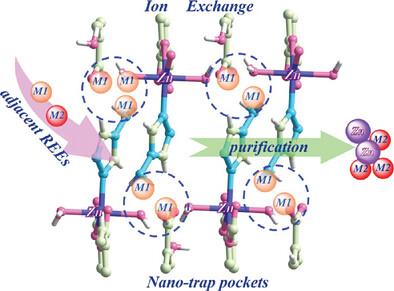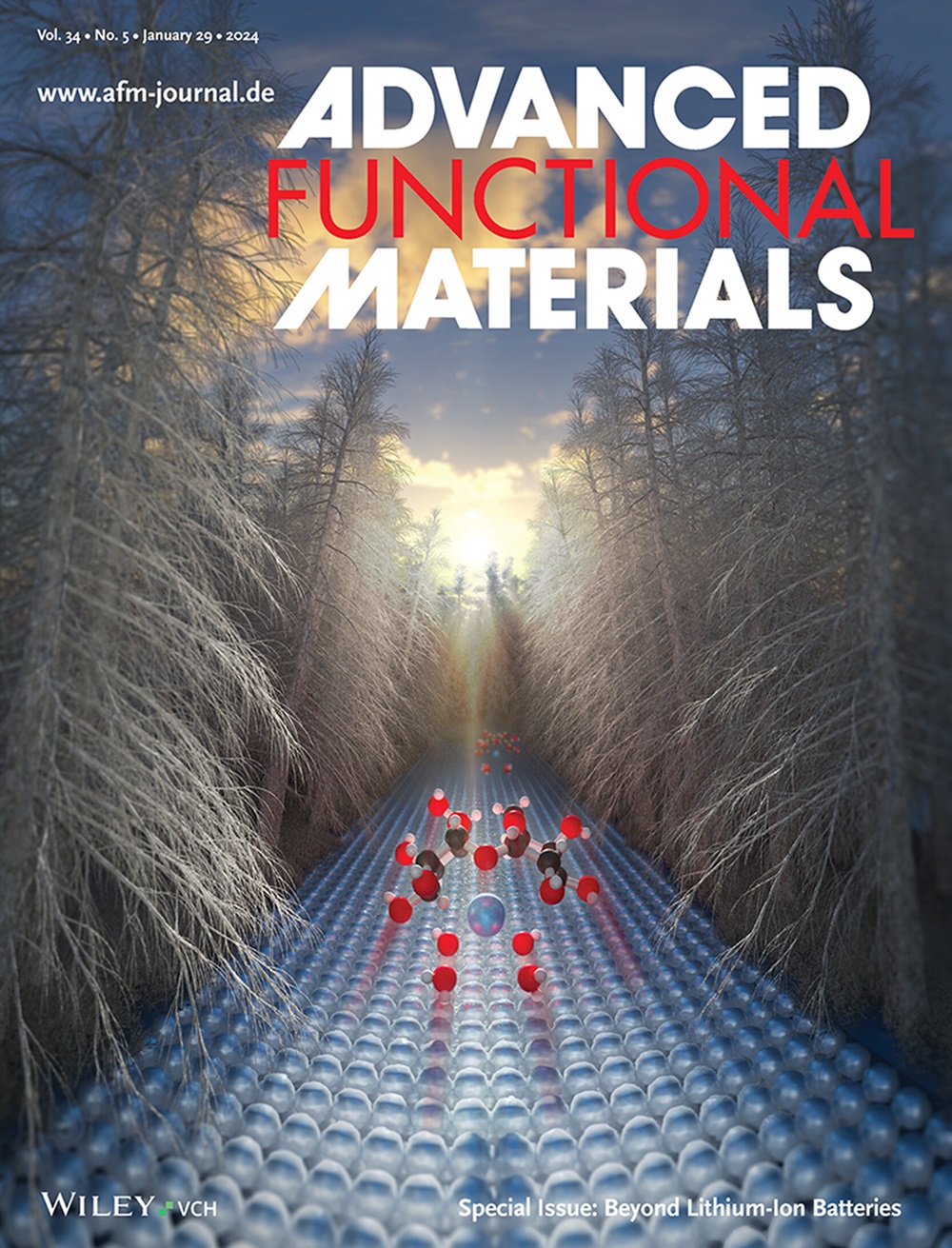Efficient Separation of Adjacent Rare Earths in One Step by Using Ion-microporous Metal–Organic Frameworks
IF 18.5
1区 材料科学
Q1 CHEMISTRY, MULTIDISCIPLINARY
引用次数: 0
Abstract
High-purity rare earth (REEs) materials are key raw materials for the development of cutting-edge technologies. However, due to similar physical and chemical properties, separating adjacent REEs from actual samples faces a formidable challenge. To overcome this challenge, an ion-microporous metal–organic framework (ATZ-BTC-Zn; MOFs) is designed and synthesized, featuring densely packed nano-trap pockets constructed from non-coordinating carboxyl and amino groups. The synergistic effect of open nano-trap pockets and suitable ions channel in ATZ-BTC-Zn is highly responsive to the size variation of lighter REEs. Notably, the configuration of Zn(H2O)62+ counterion in ATZ-BTC-Zn is similar to lanthanide hydrated ions (Ln(H2O)63+), facilitating the efficient ion exchange between them in the high-speed ion transport channel. This accelerates the diffusion of REEs within the MOF pores, enhancing the utilization of active adsorption sites and promoting the efficient capture of adjacent REEs by nano-traps. The binary model experiments show high separation factors for adjacent REEs (SFLa/Nd = 908, SFCe/La = 543), demonstrating efficient separation by ATZ-BTC-Zn in one step. This capability achieves the selective separation of adjacent REEs in tailings wastewater, providing a strategy to infer the compatibility between MOFs and REEs.

离子微孔金属有机骨架一步高效分离相邻稀土
高纯度稀土(ree)材料是发展尖端技术的关键原材料。然而,由于相似的物理和化学性质,从实际样品中分离相邻的稀土元素面临着巨大的挑战。为了克服这一挑战,离子微孔金属有机框架(ATZ-BTC-Zn;设计并合成了由不配位的羧基和氨基构成的密集排列的纳米陷阱袋。ATZ-BTC-Zn中开放的纳米阱袋和合适的离子通道的协同效应对较轻稀土的尺寸变化具有高度响应。值得注意的是,ATZ-BTC-Zn中Zn(H2O)62+反离子的构型与镧系水合离子(Ln(H2O)63+)相似,有利于它们在高速离子传输通道中进行高效的离子交换。这加速了稀土元素在MOF孔隙中的扩散,提高了活性吸附位点的利用率,并促进了纳米捕集器对邻近稀土元素的有效捕获。二元模型实验表明,ATZ-BTC-Zn对相邻稀土元素(sfa /Nd = 908, SFCe/La = 543)具有较高的分离系数,证明了ATZ-BTC-Zn一步分离的有效性。该能力实现了尾矿废水中相邻稀土元素的选择性分离,为推断MOFs与稀土元素的相容性提供了策略。
本文章由计算机程序翻译,如有差异,请以英文原文为准。
求助全文
约1分钟内获得全文
求助全文
来源期刊

Advanced Functional Materials
工程技术-材料科学:综合
CiteScore
29.50
自引率
4.20%
发文量
2086
审稿时长
2.1 months
期刊介绍:
Firmly established as a top-tier materials science journal, Advanced Functional Materials reports breakthrough research in all aspects of materials science, including nanotechnology, chemistry, physics, and biology every week.
Advanced Functional Materials is known for its rapid and fair peer review, quality content, and high impact, making it the first choice of the international materials science community.
 求助内容:
求助内容: 应助结果提醒方式:
应助结果提醒方式:


